#30. Titanic
One would never have guessed that Leonardo DiCaprio has no drawing skills after watching the way that Jack draws Rose. However, the fact is that DiCaprio did not draw Rose, as those hands who are drawing Rose belong to James Cameron. What’s more, James Cameron happens to be left-handed, so in order to match right-handed DiCaprio, he had to flip the film. Not only did James Cameron draw Rose, but he also drew all the sketches that Jack carries.
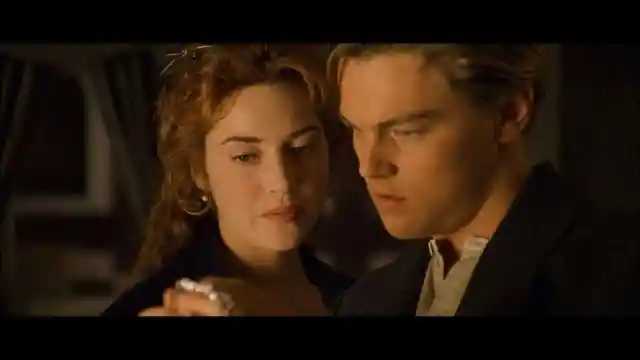
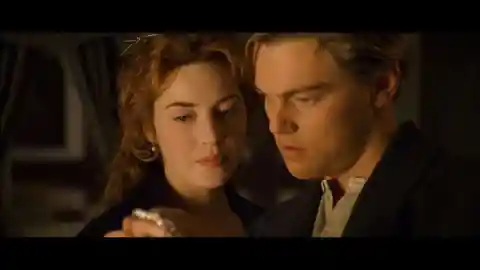
This very famous Titanic drawing scene just goes to show that James Cameron, apart from being a brilliant director, is a man of many talents, including drawing! This is to remind us that sometimes, to do something right, you must do it yourself.
#29. Alien
While the Alien franchise swaps in different androids for (almost) every installment, there is an interesting consistency to all of them. All of the androids featured in the franchise follow the alphabetical order: Ash, Bishop, Call and David. Taking into account that Prometheus serves as a kind of prequel for the films, the alphabetical order is regarded as the release year of the films, not the chronology of the series.
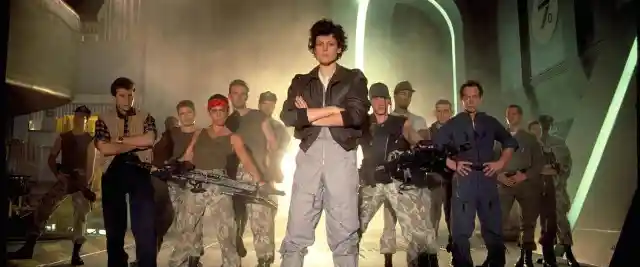
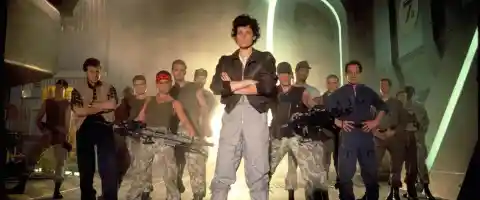
Dark Horse Comics is now bringing back the Alien franchise comic books with a set of four mini-series. Kelly Sue DeConnick will be writing a double-sized “wrap-up” issue to close out the initial run of books, and she oversaw a lot of the goings-on in the writers’ room as the series was being put together, and she will bring a new android, named Elden.
#28. No Country For Old Men
These two western films of 2017 were shot at the same time and in the same location of Marfa, Texas. A pyrotechnical test for There Will Be Blood created such a huge smoke cloud and that cloud got into the shot for No Country for Old Men. Directors Joel and Ethan Coen had to wait for it to dissipate before they could get back to shooting.
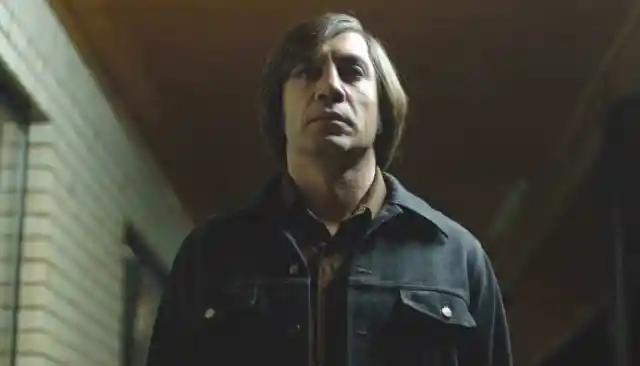
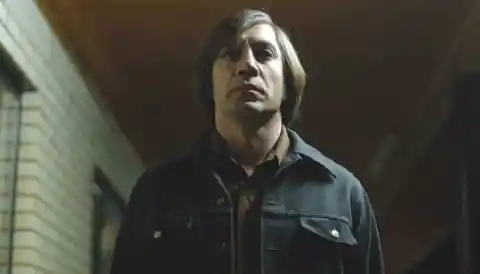
More than 50 years ago, famed filmmaker George Stevens also settled on this area for his epic Texas oil tale “Giant,” which starred Rock Hudson, Elizabeth Taylor and James Dean. The stark, gorgeous landscape outside the town shows up in all three films, and it isn’t just the wide-open desert horizon that directors take advantage of; they also employ the locals.
#27. Psycho
Alfred Hitchcock saw an opportunity to add some extra shock to his already shocking film—presenting a scrap of paper, which proves an important clue, failing to flush in a toilet. At the time, it was considered inappropriate to show a toilet being flushed on screen.
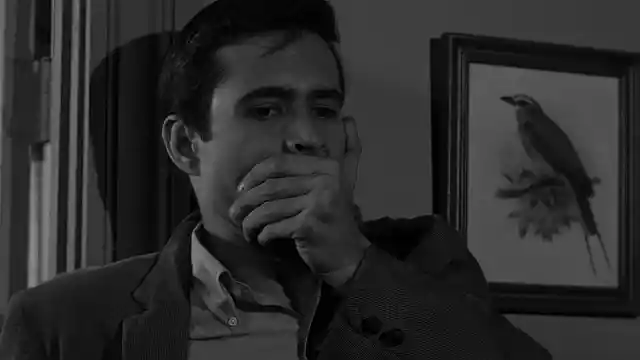
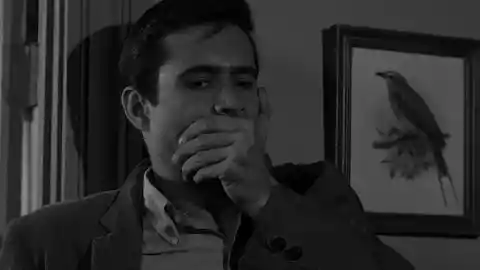
In the book, the clue was an earring found in the bathroom, but Hitchcock changed it to a piece of paper actually in the toilet, partly to add an extra jolt for viewers. Before Psycho, the water closet wasn’t something you showed on film, but rather a sacred off-screen no-man’s-land Hollywood stars rarely seemed to visit.
#26. Toy Story 2
The story likely takes place in 1998 when the Toy Story 2 crew —about 150 people —in the animation, lighting and modeling departments of Pixar, had been hard at work for some time on the movie. One day, Oren Jacob, former Chief Technical Officer of Pixar, was in the office of Larry Cutler who was also an Associate Technical Director. In what is a crazy stroke of luck, they happened to be looking at a directory in which the assets for the character Woody were stored, when they noticed, on a refresh, that there were suddenly fewer files.
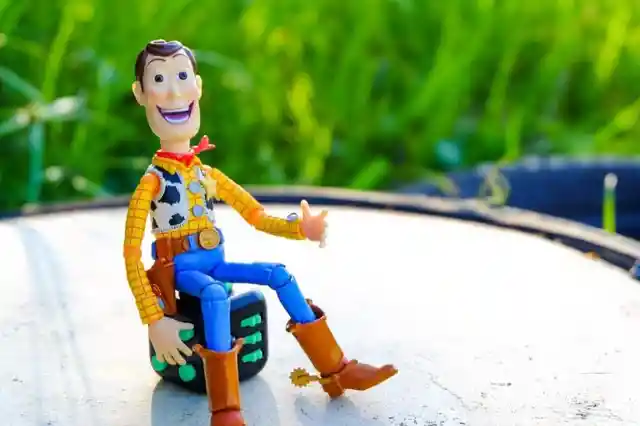

The command that had been run was most likely ‘rm -r -f *’, which commands the system to begin removing every file below the current directory. This is commonly used to clear out a subset of unwanted files. Unfortunately, someone on the system had run the command at the root level of the Toy Story 2 project and the system was recursively tracking down through the file structure and deleting its way out like a worm eating its way out from the core of an apple.
#25. Ratatouille
Remy, the gourmet rat whose adventures are depicted in the Disney/Pixar animated film “Ratatouille”, who also demonstrates his culinary prowess in the top kitchens of Paris, has boosted the demand for rats as pets. Britain’s Pets at Home domestic pet chain says rat sales have surged 50 percent since the film premiered in 2007.
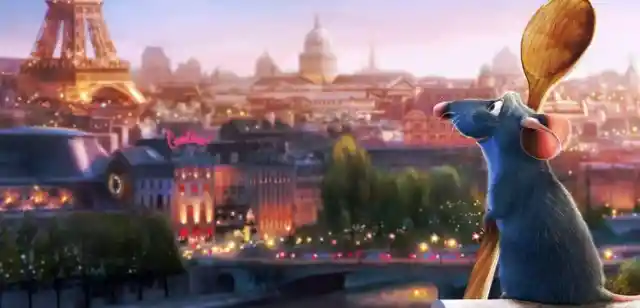
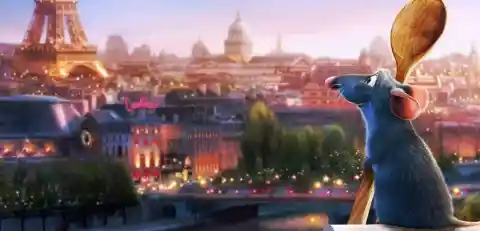
Steve Fairburn revealed that “It’s early doors yet, but it seems ‘Ratatouille’ has done wonders for the image of rats”. He added that “contrary to popular opinion, rats are actually one of the cleanest and least smelly pets you can own. They are incredibly responsive to learning and can be taught to do amazing tricks, much in the way that dogs and cats can”.
#24. Finding Nemo
Marine biologists say numbers of clownfish have fallen by 75 percent in some areas in the years since the hit movie first came out. The real-life exotic fish from the animated film Finding Nemo could become an endangered species due to the fact that so many children want them as pets. Marine biologists believe the demand among children, mainly in Britain, for their own orange, white and black striped Nemo lookalike is to blame.
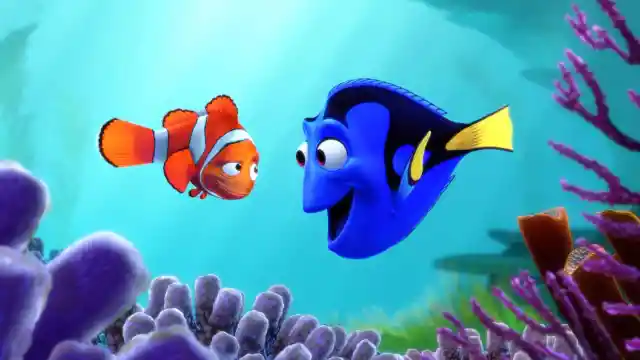
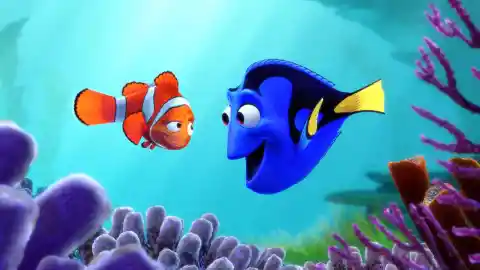
Dr. Billy Sinclair, of the University of Cumbria, who spent five years studying clownfish in the reefs of Australia, said they should now be made an endangered species to ensure the species survives. His research found numbers had fallen from 25 to just six at one coral reef in Queensland. Furthermore, around 110,000 clownfish are imported into the UK each year, part of an exotic fish market in Britain worth £1.24billion annually.
#23. Pulp Fiction
Pulp Fiction has been widely regarded as Tarantino’s masterpiece, with particular praise for its screenwriting and the iconic wallet that Jackson carried in the film. But the accessory with ‘Bad Mother F” written on it actually belonged to the director, Quentin Tarantino. Jules’ wallet in Pulp Fiction that reads “Bad Mother F” belonged to the director, who picked it up because of its reference to the 1971 film Shaft.
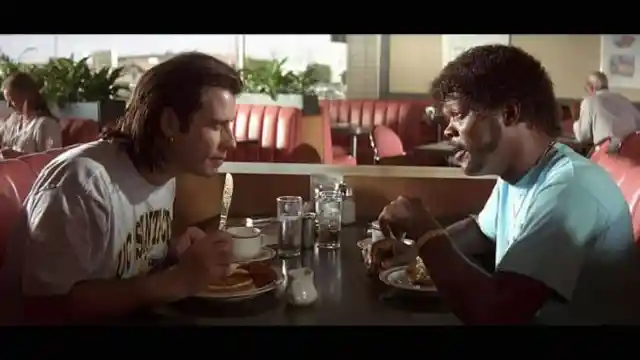
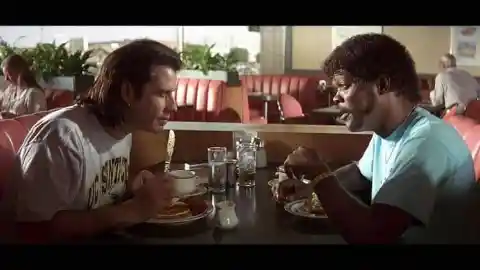
As it happened, Samuel L. Jackson would go on to play the character that inspired the wallet in the 2000 remake of Shaft. Quentin Tarantino wrote the role of Jules specifically for Samuel L. Jackson, however, it was almost given to Paul Calderon after a great audition. When Jackson heard this, he flew to Los Angeles and auditioned again to secure the role. Calderon ended up with a small role, as Paul.
#22. Pulp Fiction
The scene where Travolta’s Vincent plunges a needle into the chest of Thurman’s Mia to revive her from an overdose using adrenaline was filmed with Travolta pulling the needle out of her and then the film was run backward. With Mia lying on the floor unconscious after a heroin overdose, Vega is preparing to stab her in the heart with an adrenaline shot. In order to get through the breastbone, Vega must pull back and come down with force.
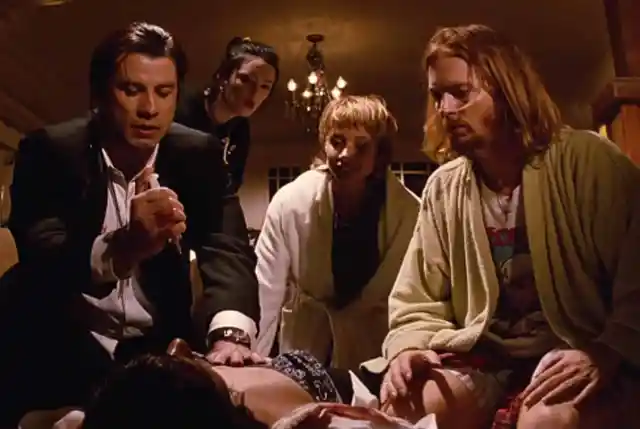
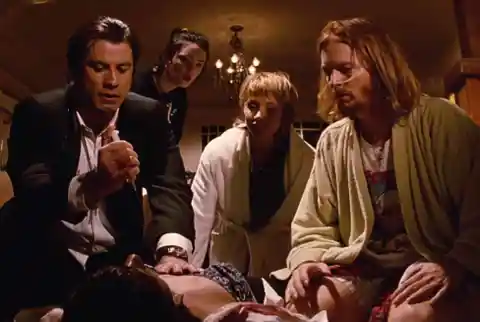
To make the scene more believable and realistic while getting the full effect of stabbing someone in the heart, Tarantino (writer and director) shot the scene in reverse. He filmed Vega pulling the needle out of Wallace’s heart. Once edited and ran in reverse, voilá, you have your heart stabbing moment.
#21. Casablanca
One of the most remembered scenes from the 1942 classic film Casablanca is when the musician Sam is seen playing the piano. It looked great on the big screen, but the famed musician Sam didn’t actually play the piano. Tyler-born actor and musician Arthur “Dooley” Wilson was a singer and drummer, but he did not play the piano.
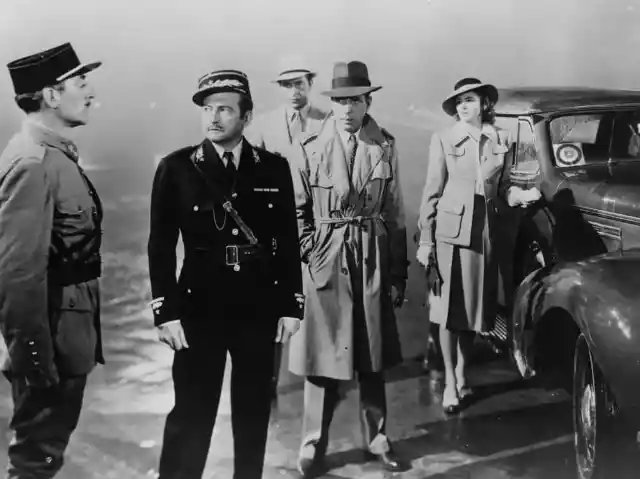
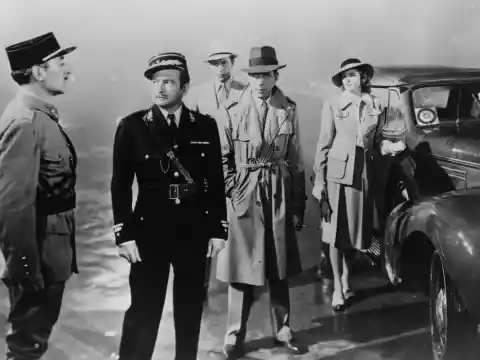
Wilson appeared in more than 20 films but is best known for his role in “Casablanca” as Sam, the piano player employed by nightclub owner Rick. He also sings the Herman Hupfeld song “As Time Goes By,” which is a recurring motif in the film, reminding Rick and Ilsa of their lost love affair in Paris during World War II. Wilson was selected to play Sam because of his voice, according to the marker application submitted to the city by Stanley Cofer, with Empowerment Community Development Corporation.
#20. Taxi Driver
Screenwriter Paul Schrader told The Hollywood Reporter that when he was 27 years old and after having several economic and familiar problems, he ended up in an emergency room with a bleeding ulcer. When Ihewas in the hospital, he realized that he hadn’t spoken to anyone in almost a month. So that’s when the metaphor of the taxicab occurred to me:
“This metal coffin that moves through the city with this kid trapped in it who seems to be in the middle of society but is in fact all alone”.
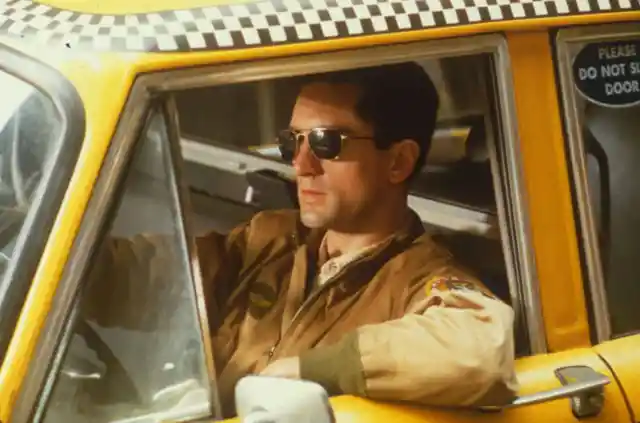
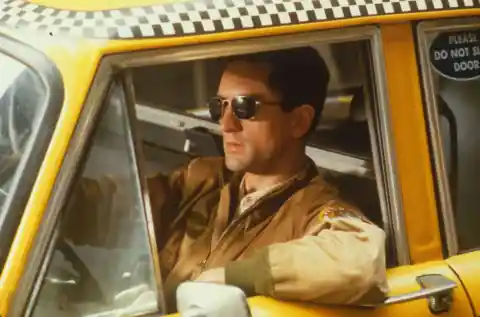
After he got out of the hospital, he crashed at an ex-girlfriend’s place, and just wrote continuously. The first draft was maybe 60 pages, and then he started the next draft immediately, and it took less than two weeks. After that, he sent it to a couple of friends in L.A., but basically, there was no one to show it to. A few years later, after he interviewed Brian De Palma, he told Brian that he had written a script and De Palma accepted to read it.
#19. The Wizard of Oz
In that famous poppy-field scene in The Wizard of Oz, the snow coming down is calming to Dorothy and her posse. But they should probably have been far less relaxed as these were actually asbestos-based fake snowflakes, a popular Christmas decoration throughout the United States and Europe at the time. Chrysotile, or “white” asbestos, visually resembles real snow.
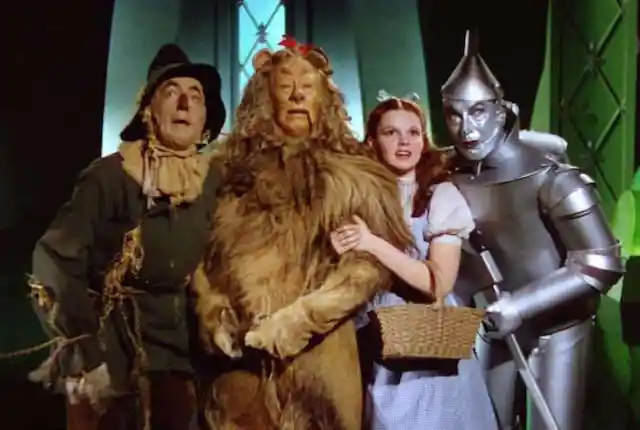
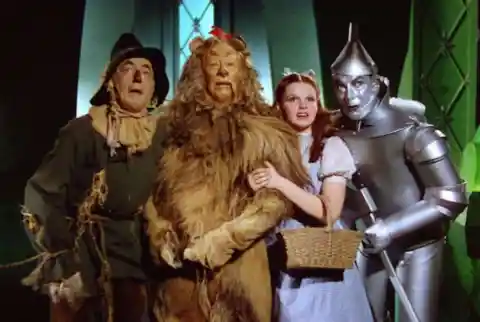
Although none of the principal actors in “The Wizard of Oz” are known to have died from any cause related to asbestos, it is sadly worth noting that Jack Haley, Jr., an award-winning director and producer and the son of Jack Haley who played the Tin Man, is reported to have developed “respiratory failure” and died at age 67 in 2001. Could it have been mesothelioma from asbestos dust unknowingly brought home by his father during the filming of “The Wizard of Oz”? We’ll never know.
#18. Up
During the five years the film Up was in production, Pixar employed new rigging, animation, shading and rendering techniques to overcome the challenges the movie brought to the table. The film tells the story of a retired widower called Carl who uproots his house and flies it to Venezuela, suspended from a canopy of helium balloons.
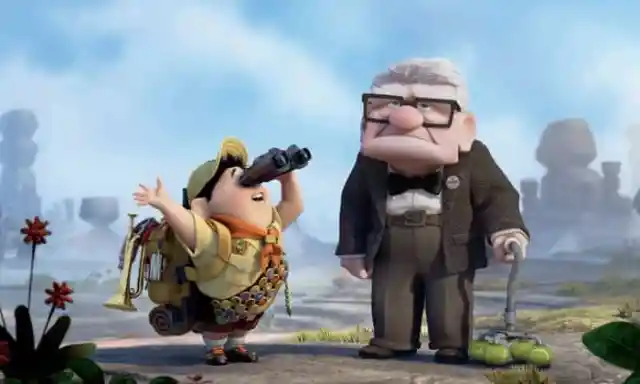
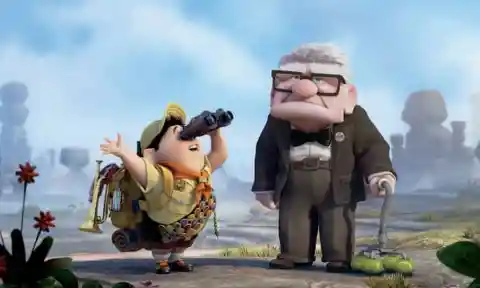
Like the house in the film, the technology to create Up was anything but a light load. The challenges included defining intricate rigging and simulation to reproduce the balloons convincingly, and inventing a clever workaround to overcome the inherent difficulty of rendering iridescent feathers. Jon Reisch, FX Director, said that “the entire canopy was filled with balloons, not only the outer shell”. The final balloon count in the film was 10,297.
#17. Jurassic Park
Gary Rydstrom, the sound designer of the film Jurassic Park, had won two Academy Awards for sound design and mixing in the 1993 film. Rydstrom had to create dozens of distinct dinosaur noises essentially from scratch since no one really knows what these long-dead animals would have sounded like. His solution was to spend months recording animal noises, then tweaking those homegrown sounds to create something otherworldly but still organic.
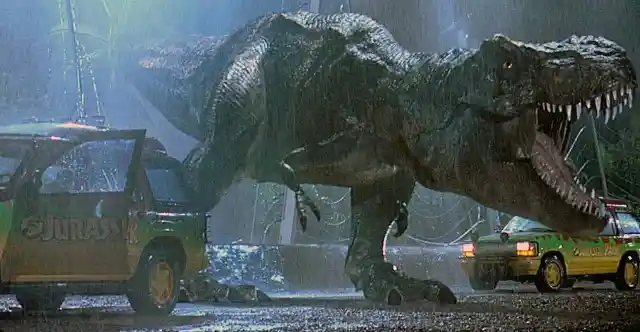
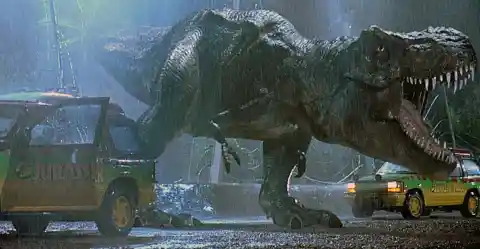
Rydstrom, when referring to the sounds that velociraptors made, said that “It’s somewhat embarrassing, but when the raptors bark at each other to communicate, it’s a tortoise having sex”. He remembers that he had recorded that at Marine World. “Tortoises mating can take a long time. You’ve got to have plenty of time to sit around and watch and record them“, added Rydstrom.
#16. Toto
On August 12, 1939, “The Wizard of Oz” premiered as a black and white musical film adaptation prior to its reworking as a Technicolor novelty. The film was released a couple of weeks later on August 25. The iconic movie was nominated for six Academy Awards, snagging two of them. However, Dorothy Gale’s memorable furry shadow, Toto, didn’t win any Oscars. But we think Terry, the brindle Cairn Terrier who was billed as Toto, was worthy of a golden statue.
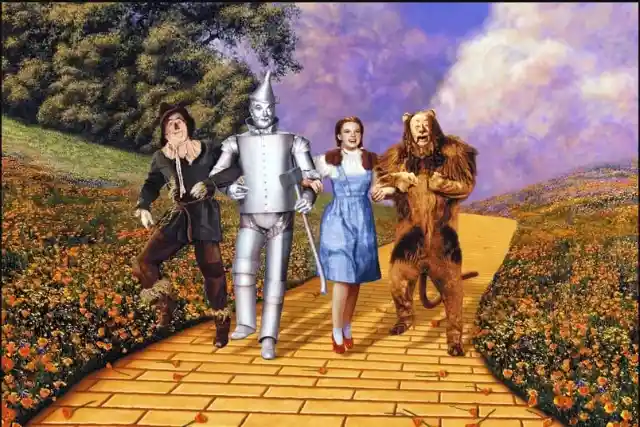
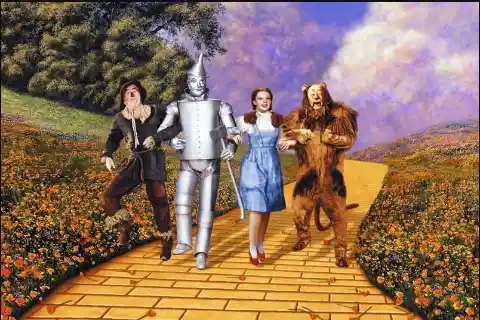
Not surprisingly, the acting duo developed quite a bond. Garland’s attachment was so strong that she repeatedly asked to adopt the dog, but Spitz refused. Terry’s owners did pay homage to her film role, though, renaming her Toto after the movie’s debut. Just how much was a dog paid to “act” on set? More than the Munchkins! Terry raked in $125/week, grossing more than most Americans made at the time.
#15. Jaws
In 1974, Carl Gottlieb was the story editor on ABC’s The Odd Couple when he was asked by his friend, a then relatively unknown director named Steven Spielberg, to give him notes on the script for his movie about a shark. After reading Gottlieb’s extensive notes, Spielberg asked if he would join the Jaws production and help to redraft the troubled script adaptation of Peter Benchley’s best-seller. Gottlieb quit his day job to help him.
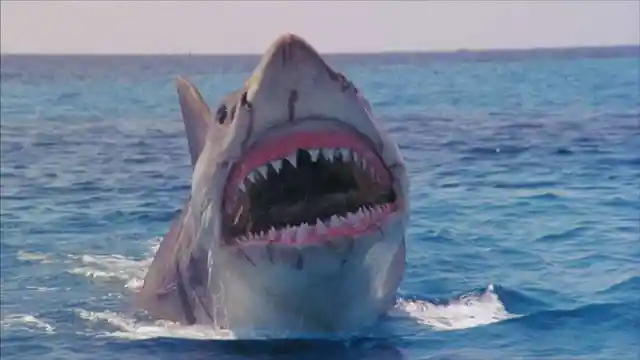
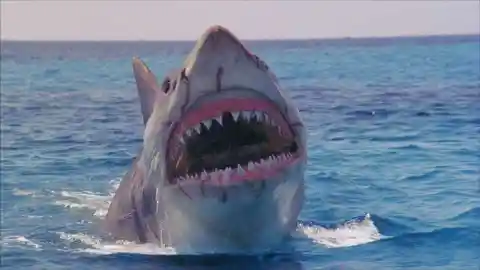
Richard Zanuck and David Brown were both very stingy producers of the film, so everyone kept telling them “You’re gonna need a bigger boat“. Roy Scheider, who played Brody in the movie, used the line at different points in his performance throughout filming. But the one reading that made it into the final cut of the movie was after the suspenseful first look at the great white shark.
“It was so appropriate and so real and it came at the right moment, thanks to Verna Field’s editing,” Gottlieb said.
#14. Horror Films
What do Norman Bates, Hannibal and Leatherface have in common? Most of us would say that they do not share any trait in particular except that they were the most famous killers seen in movies. Nonetheless, you will find out that in reality, they have something in common. The three of them were inspired by serial killer Ed Gein.
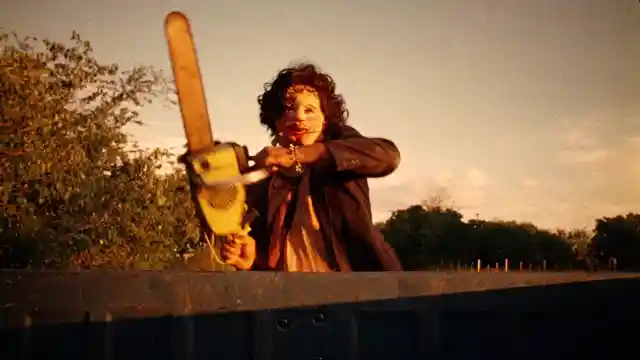
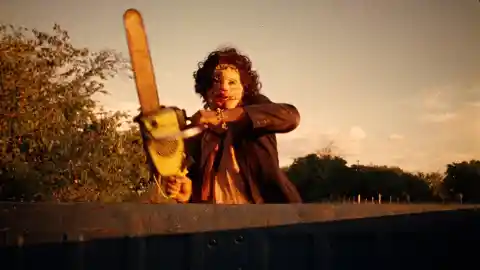
When he was finally caught and his house of horrors in Plainfield, Wisconsin, discovered, police found masks and lampshades made from human skin, among plenty of other atrocities. His astonishing depravity proved a source of creative inspiration.
#13. Hannibal
There was scarcely a month during 1988 when Thomas Harris’ novel, The Silence Of The Lambs, was not on or around the top of the New York Times list of America’s bestselling books. The sequel to Harris’s FBI thriller Red Dragon was one of the genuine publishing sensations of the late ’80s.
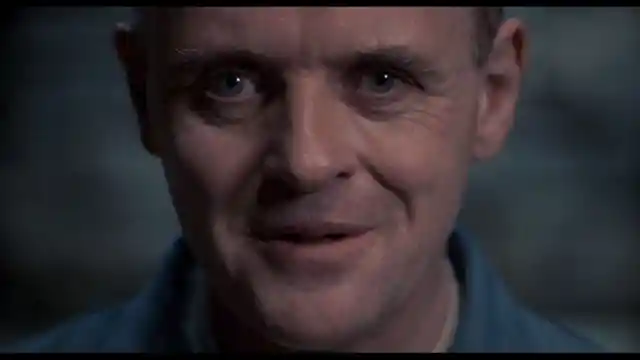
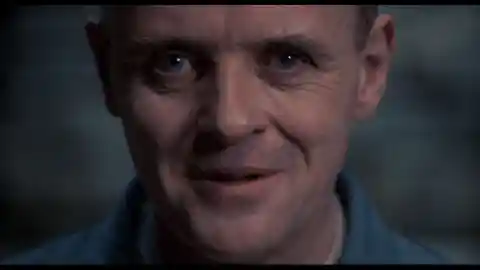
While Anthony Hopkins turned the crazy-smart serial killer into an unforgettable cultural touchstone, the role was originally supposed to go to Gene Hackman, who bought the rights to The Silence of the Lambs and had planned on directing the film himself. He backed off the project when he decided that the role was too dark for his taste.
#12. Paranormal Activity
It is now the turn to talk about Paranormal Activity. First-time director Oren Peli spent just $15,000 making the film, which has so far grossed more than $65 million in the US and Canada. That’s a record-breaking rate of return of more than 433,000 percent.
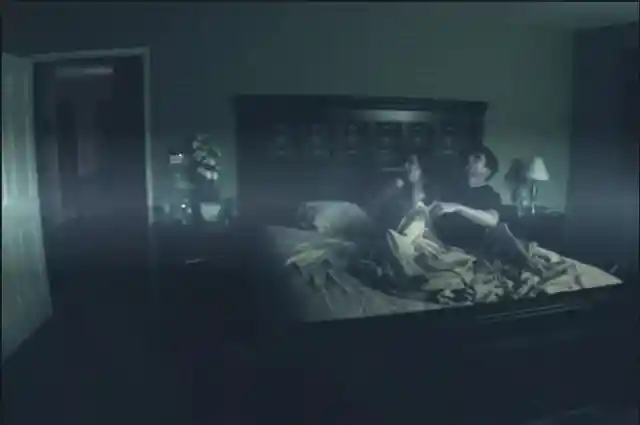
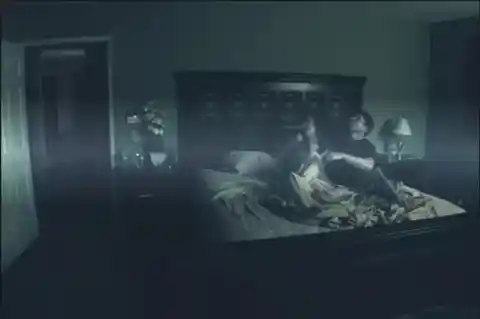
The first of these “found-footage” horror films had hit screens in 2009. The horror film cost roughly $15,000 to produce and earned a profit of $193 million for Paramount. Only in their wildest dreams do executive dare to consider that much profit. The Wrap’s Daniel Frankel crunches the numbers, noting that the previous record holder, The Blair Witch Project, cost $60,000 to produce and garnered a 414,000 percent return on investment.
#11. Mars
Continuing with numbers, investment and returns, this is the turn of the two biggest money loser films of all time John Carter and Mars Need Moms, and they have something in common, as both films take place in Mars. John Carter, the 2012 science fiction movie which bombed at the box office, cost the Walt Disney Company $306.6 million to make according to recently-released documents, while Mars Need Moms has cost $150 million.
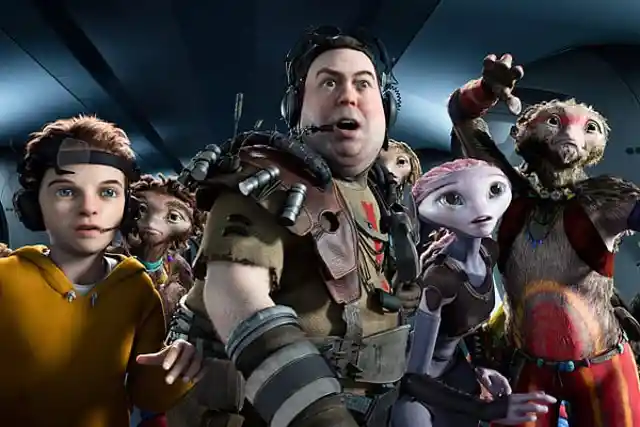
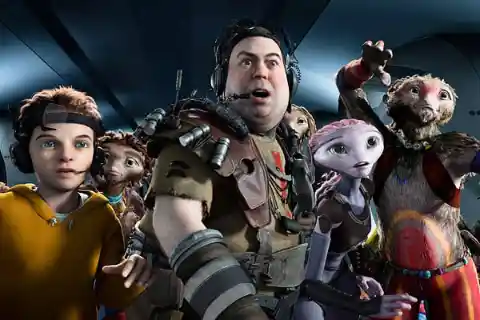
It’s no secret that John Carter was far from a success. Industry analyst Box Office Mojo claims that it grossed $284.1 million worldwide compared to the $1.5 billion made by Disney’s superhero team-up The Avengers which was released two months after John Carter in May 2012.
#10. Butch Cassidy
Butch Cassidy and the Sundance Kid was the first film to combine lovable outlaws, buddy comedies, and Westerns. It also put Robert Redford on the A-list, and introduced audiences to the bizarrely anachronistic pop song “Raindrops Keep Fallin’ on My Head”.
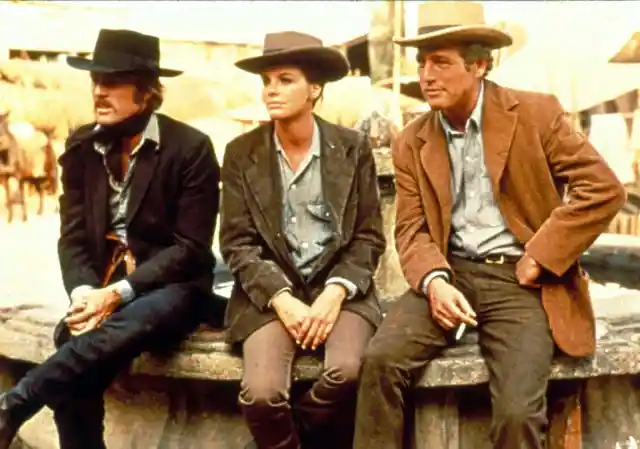
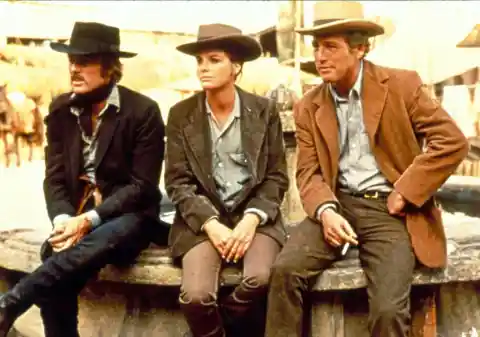
The original script for Butch Cassidy and the Sundance Kid, by William Goldman, was originally titled The Sundance Kid and Butch Cassidy. That all flipped when Paul Newman, maybe the biggest star on the planet at the time of production, took the role of Butch.
#9. Harry Potter
For years, millions of people have dreamed of getting a letter in the mail inviting them to attend the Hogwarts School of Witchcraft and Wizardry. Harry Potter could be deemed as the book series that defined this generation. Having humble beginnings in a small coffee shop in the United Kingdom, our magical hero has come a long way, gaining and losing much in the process.
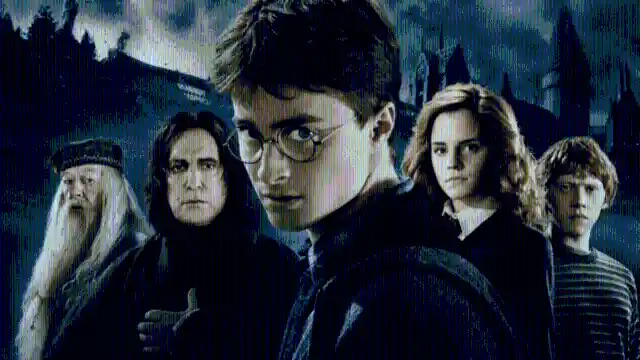
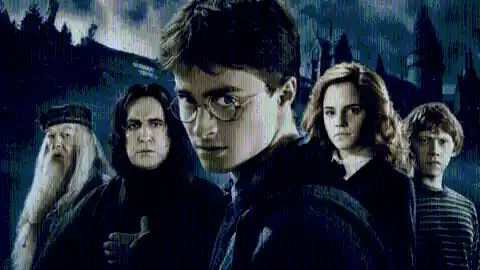
What most people have not discovered is that there are several cameos in the whole franchise of Harry Potter. For example, in Harry Potter and the Goblet of Fire, The Weird Sisters include Pulp members Jarvis Cocker and Steve Mackey as well as Radiohead’s Jonny Greenwood and Phil Selway. When you’re going to have one dance every four years, you’d better hope the entertainment is good.
#8. American Psycho
Mary Harron, the director of the 2000s American Psycho film revealed in an interview with BlackBook where Christian Bale got the inspiration from to portray Patrick Bateman. She said that Bale phoned her one evening and told her that he got the perfect inspiration.
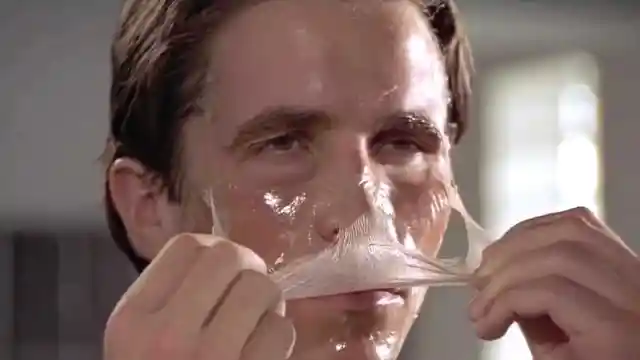
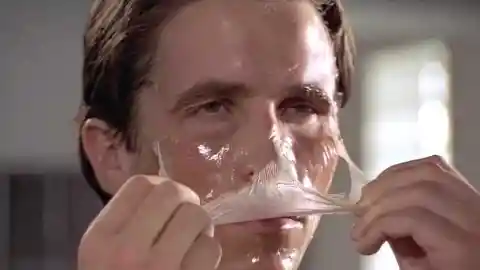
We talked about how Martian-like Patrick Bateman was, how he was looking at the world like somebody from another planet, watching what people did and trying to work out the right way to behave. And then he told me that he had been watching Tom Cruise on David Letterman, and he just had this very intense friendliness with nothing behind the eyes, and he was really taken with this energy.
#7. Chewbacca
They say dogs are man’s best friend. To George Lucas, his pet Indiana became much more as it was the inspiration behind one of the most beloved characters in the Star Wars saga: Chewbacca. The friendship between Han Solo and his copilot was born out of Lucas’s appreciation for his dog Indiana, who, like Chewbacca, was strong, brave, resilient, imposing, playful, and fiercely loyal.
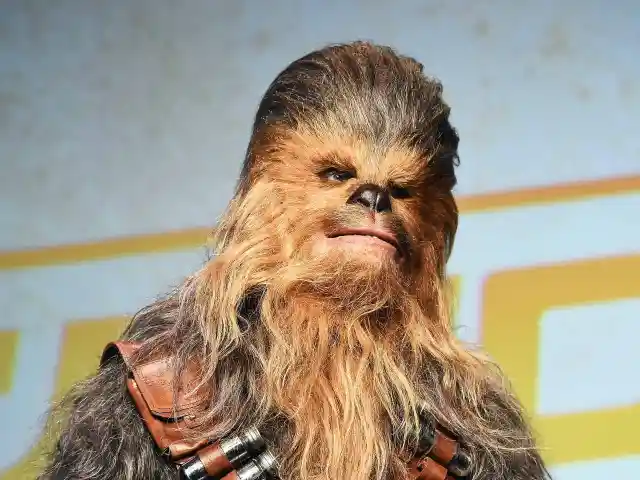
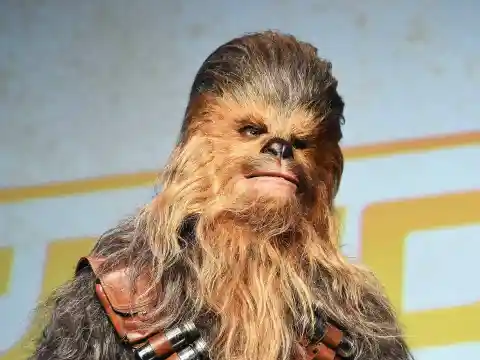
Even in appearance, Chewie started out rather dog-like, with perky ears, bright eyes, and even, at times, a drooping tongue. The Wookiee eventually evolved into a clothed and armored lemur-like figure, and ultimately, the familiar combination of an ape, a cat, and finally a dog, that has become the iconic character we know and love.
#6. Bill Murray
In addition to Kevin Costner, Pierce Brosnan, and Mel Gibson, Bill Murray was considered for the role of the caped crusader in the 1989 film Batman. It wasn’t Burton who would have cast Murray at all, and the film he could have starred in was mostly unrecognizable from Burton’s final film.
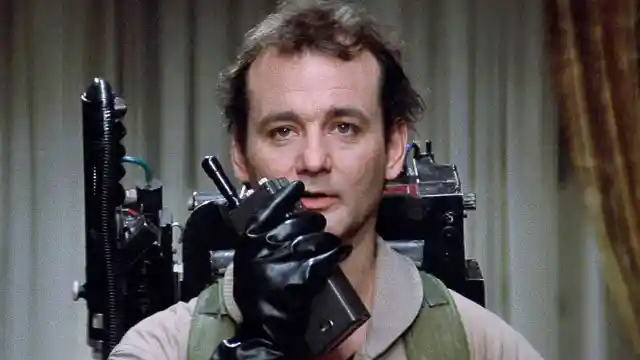
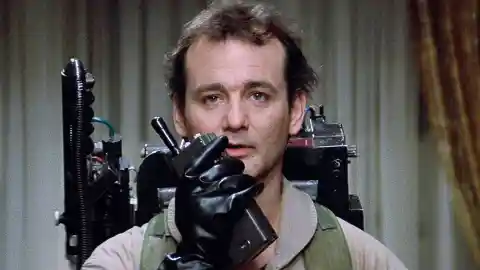
Instead, Murray was targeted by Ivan Reitman who also wanted to cast Eddie Murphy as Robin and who was attached to Tom Mankiewicz’s The Batman (written in 1983), which would have initially been released in 1985. It went through at least nine separate rewrites and eventually Burton was hired after the success of Pee Wee’s Big Adventure in 1985, at which point he rejected Tom Mankiewicz’s script as too campy.
#5. The Good, The Bad, The Ugly
Though it has to forever compete with The Searchers and High Noon, few Western films will ever have the impact of The Good, The Bad and The Ugly, the final film in Sergio Leone’s “Dollars Trilogy” and the most famous Spaghetti Western. It catapulted Clint Eastwood to super-stardom, changed the way countless directors thought about the genre, and continues to influence film to this day.
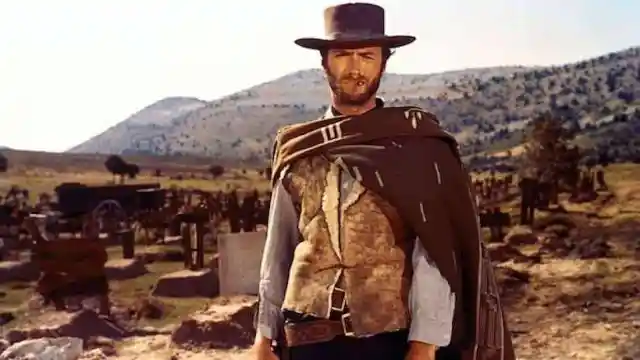
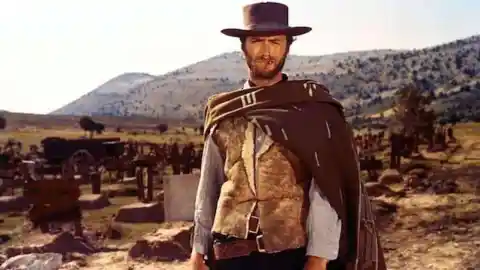
The scene when Blondie and Tuco blow up the bridge leading to the cemetery where the gold is believed to be buried had to be shot twice. The signal to blow up the bridge was supposed to be the word “Vaya”, and the crew gave a Spanish officer the honor of igniting the blast. Unfortunately, a member of the crew, while trying to hurry a cameraman, said “Vaya” too quickly. The officer heard the word and blew up the bridge.
#4. Scream
The original title of the film was Scary Movie, but it was changed to Scream by the Weinstein brothers—then the heads of the film’s production company, Miramax—in the middle of production. They allegedly decided on the change because Harvey Weinstein was listening to the Michael Jackson song “Scream” in his car with his brother Bob. They both liked the title for a horror movie.
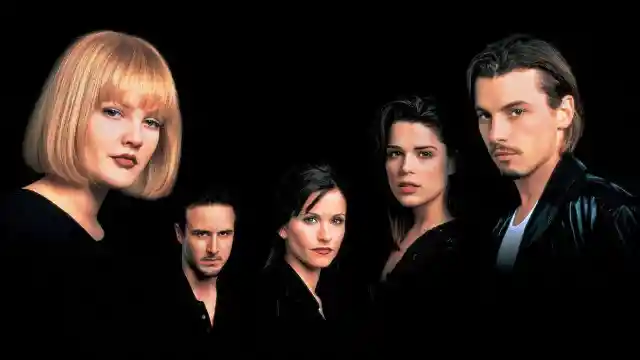

The Weinstein brothers initially approached noted horror directors George A. Romero and Sam Raimi for directorial duties, but they both turned the project down. Wes Craven, who had directed the original A Nightmare on Elm Street, initially passed as well, but he signed on to direct after Drew Barrymore agreed to appear in the film in the lead role of Sidney Prescott.
#3. John Landis
Directors may have a reputation as egomaniacs that don’t like to share the spotlight, but John Landis has proven happy to give other directors cameos in his films.
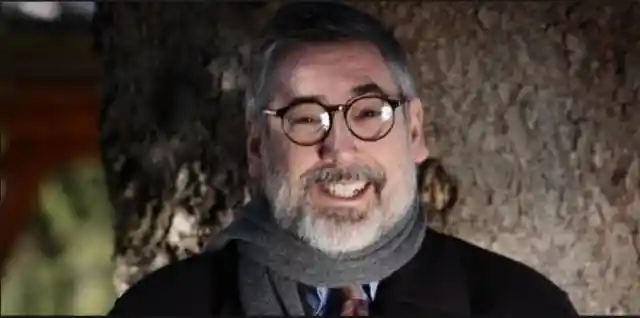
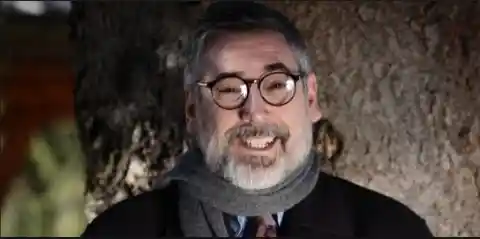
Frank Oz and Steven Spielberg both appeared in The Blues Brothers; George Lucas popped up in Beverly Hills Cop III; Into the Night featured Amy Heckerling, David Cronenberg, Jonathan Demme, and others; and Dario Argenta played a paramedic in Innocent Blood.
#2. Oscars
At the first Academy Awards in 1929, the winners had been announced to the public three months previously. However, the following year the Academy decided to create a sense of suspense and instead sent an advanced list of award winners to newspapers, embargoed for publication until 11 pm on the night of the Oscars ceremony.
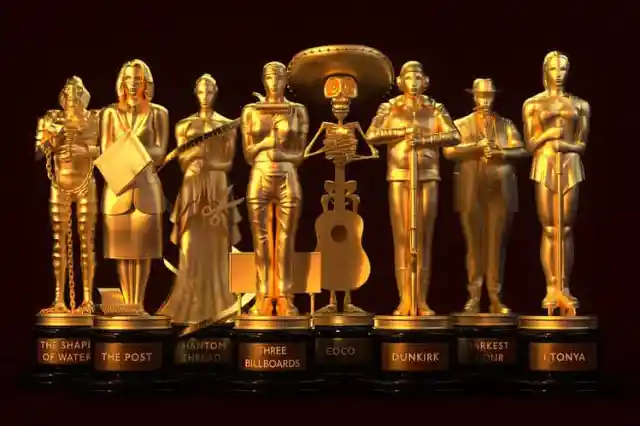
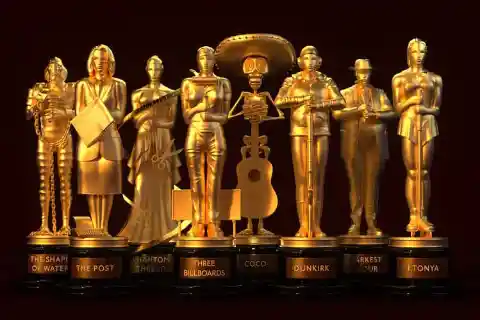
This system remained in place for the next 10 years. However, in 1940 the LA Times broke the embargo and announced the winners in their evening edition, meaning that nominees could find out their fate before turning up at the ceremony. As a result of this fiasco, the following year (1941) the sealed envelope system (that is still used today) was introduced and the results became a closely guarded secret.
#1. The Matrix
Simon Whiteley, the creator of The Matrix code, attributes the design to his wife, who’s from Japan. “I like to tell everybody that The Matrix’s code is made out of Japanese sushi recipes”, says Whiteley, a production designer from England who’s now based at the Animal Logic animation and visual-effects studio in Sydney. He scanned the characters from his wife’s Japanese cookbooks. “Without that code, there is no Matrix”.
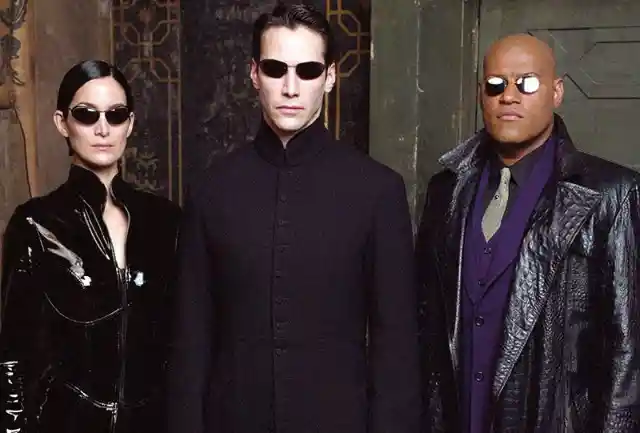
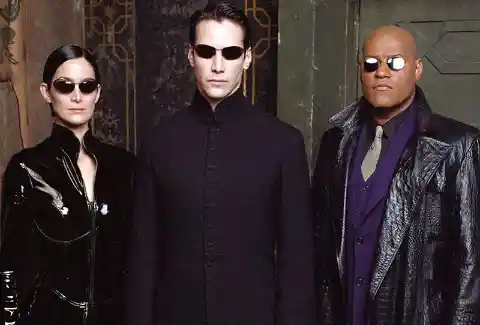
Whiteley brought his meticulous precision to his latest project, “The Lego Ninjago Movie“, concept-designing its Japan-inspired Lego world and the mechs that riff off skyscraper-tall metal gun machines. The third in “The Lego Movie” franchise is now out in theaters worldwide.